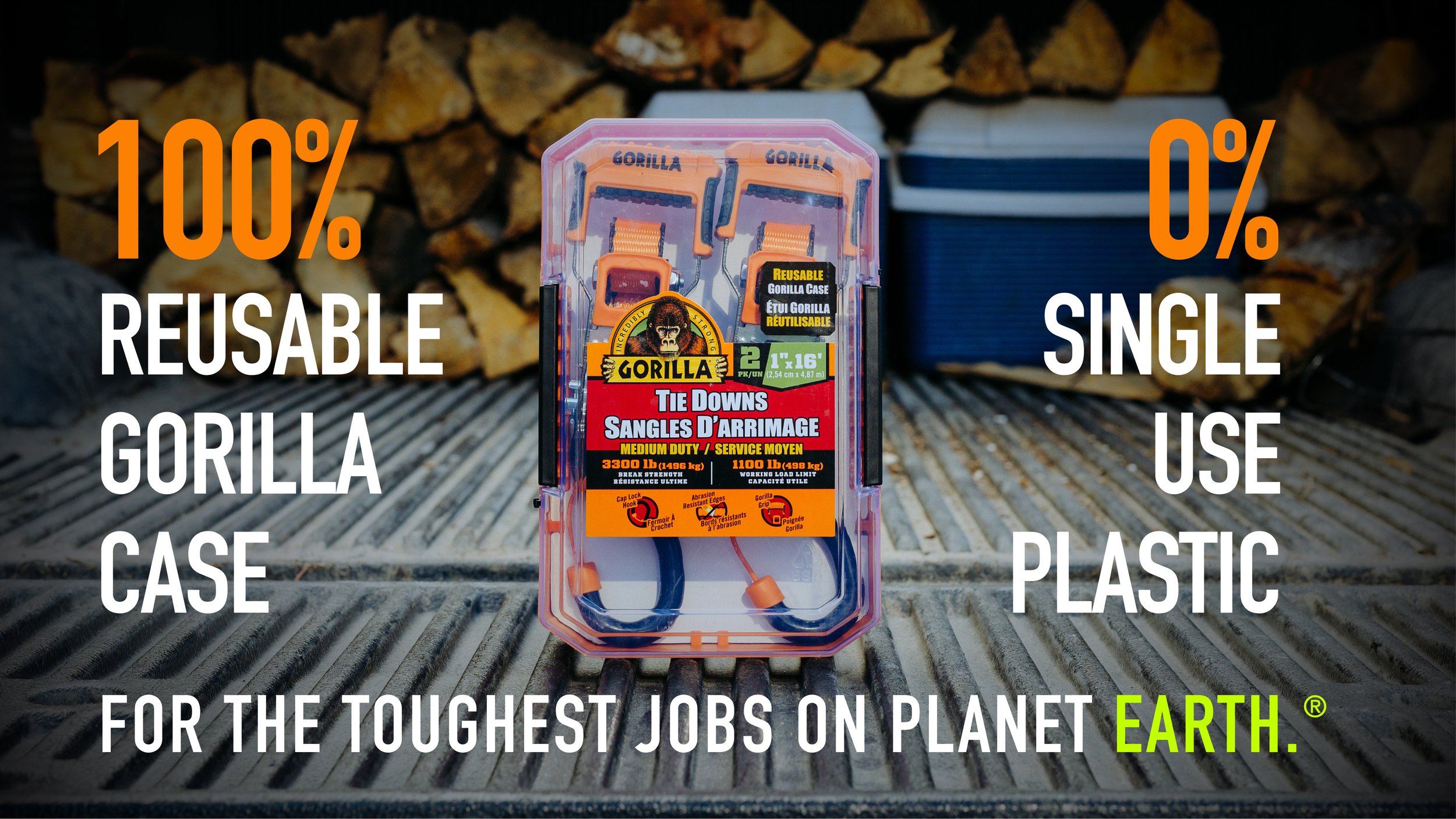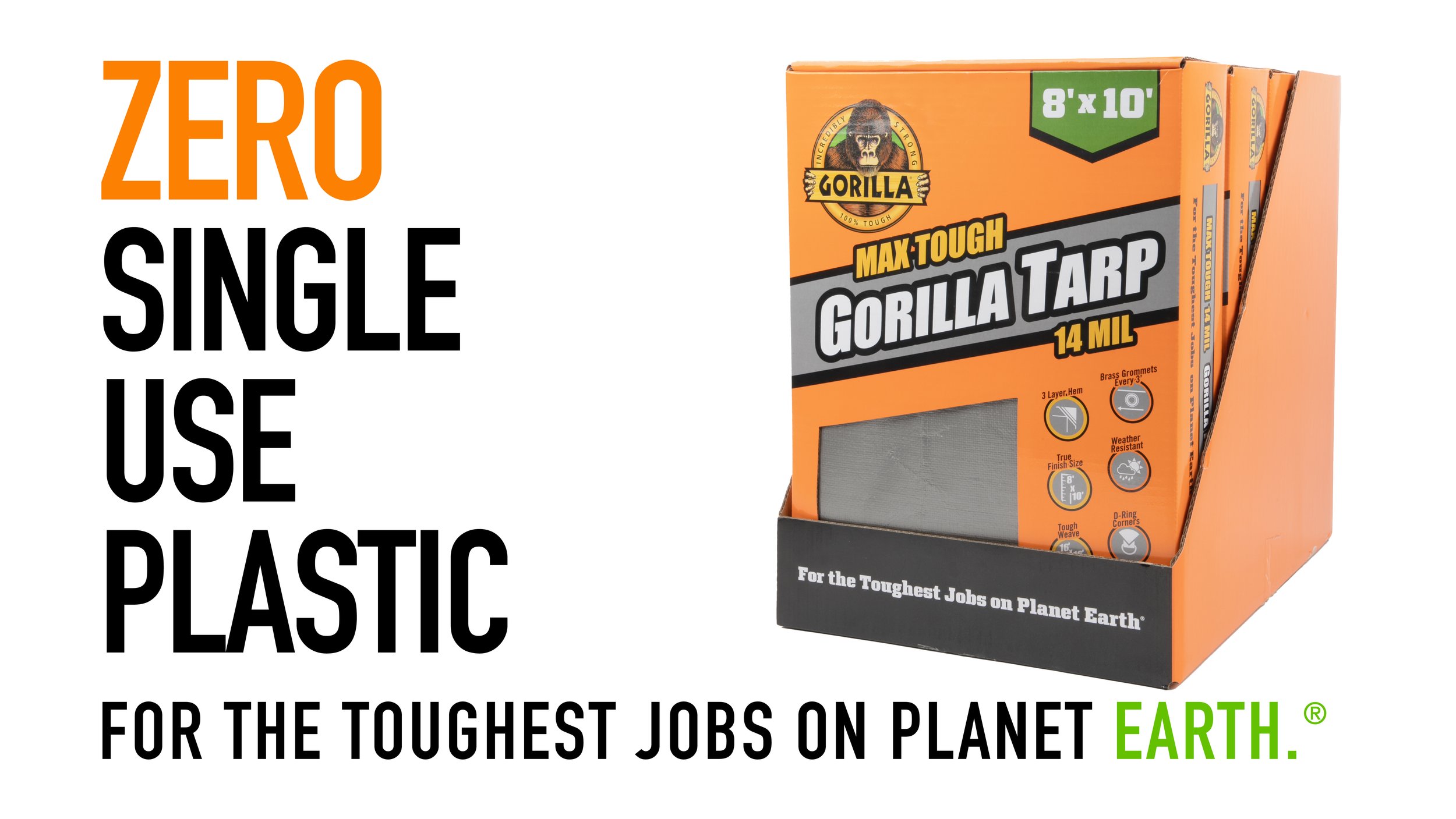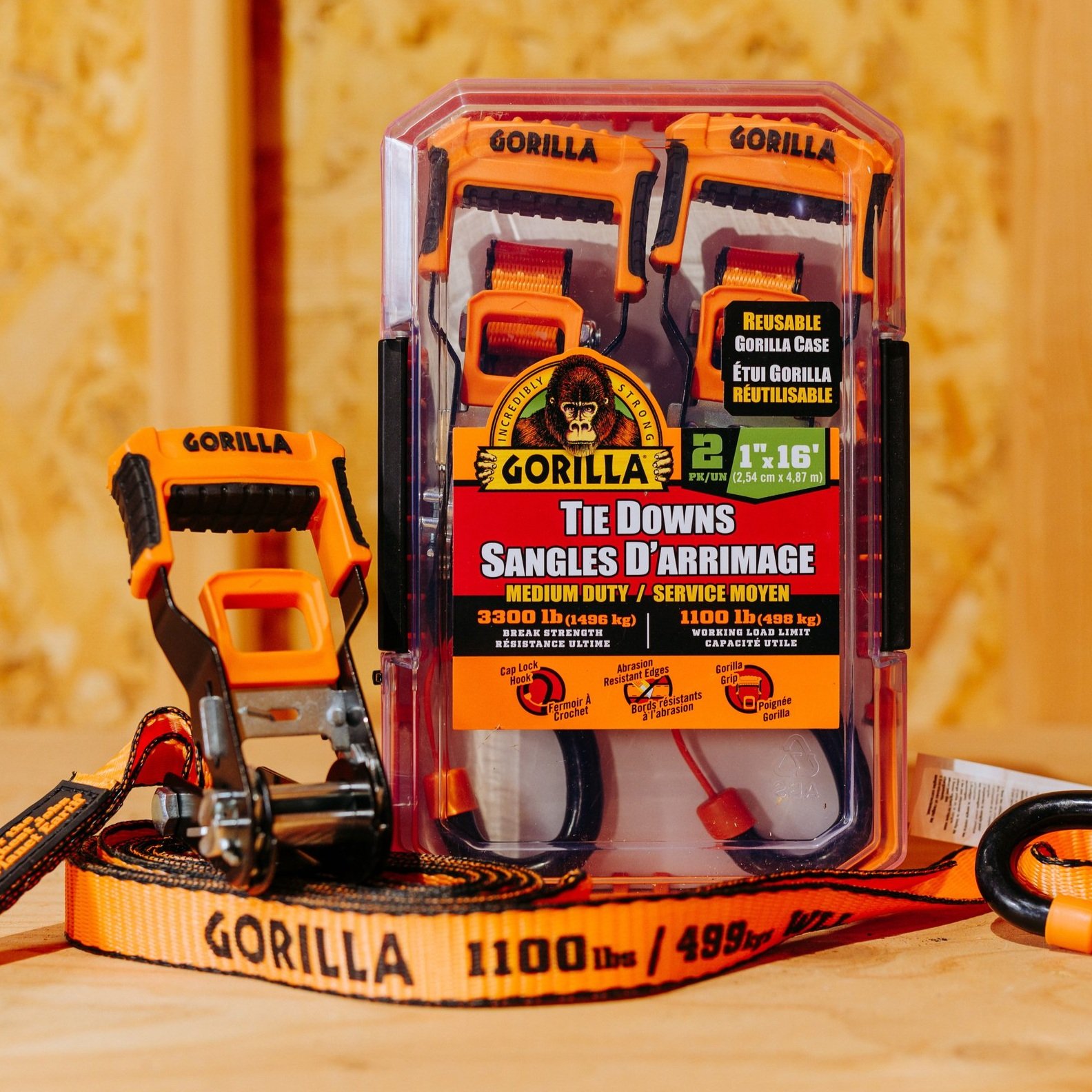Gorilla Tarp & Strap Packaging
Another collaboration between Pixel & Timber and Fisher Design, this project yielded a pair of exciting new packaging strategies for Gorilla’s new line of tarps and ratcheting tie-down straps. This project introduces two low impact and new-to-category packaging solutions for a new line of Gorilla Glue branded tie downs and tarps. By optimizing the designs of each package for both purpose and duration, this project introduces a more nuanced approach to sustainable packaging design than simple material reduction alone.
Project Summary
The design brief for this program was to increase the perceived value of a new line of tarps and tie-down straps while simultaneously reducing ecological impact and eliminating single-use plastic. To achieve these goals, Pixel and Timber pushed our structural designs to opposite ends of the packaging lifespan spectrum. For tarps, we shifted the strategy from non-recyclable, single-use poly bags to plastic-free, folded cartons. For tie-downs, we introduced a durable, reusable case designed to provide a permanent home for the tools they contain.
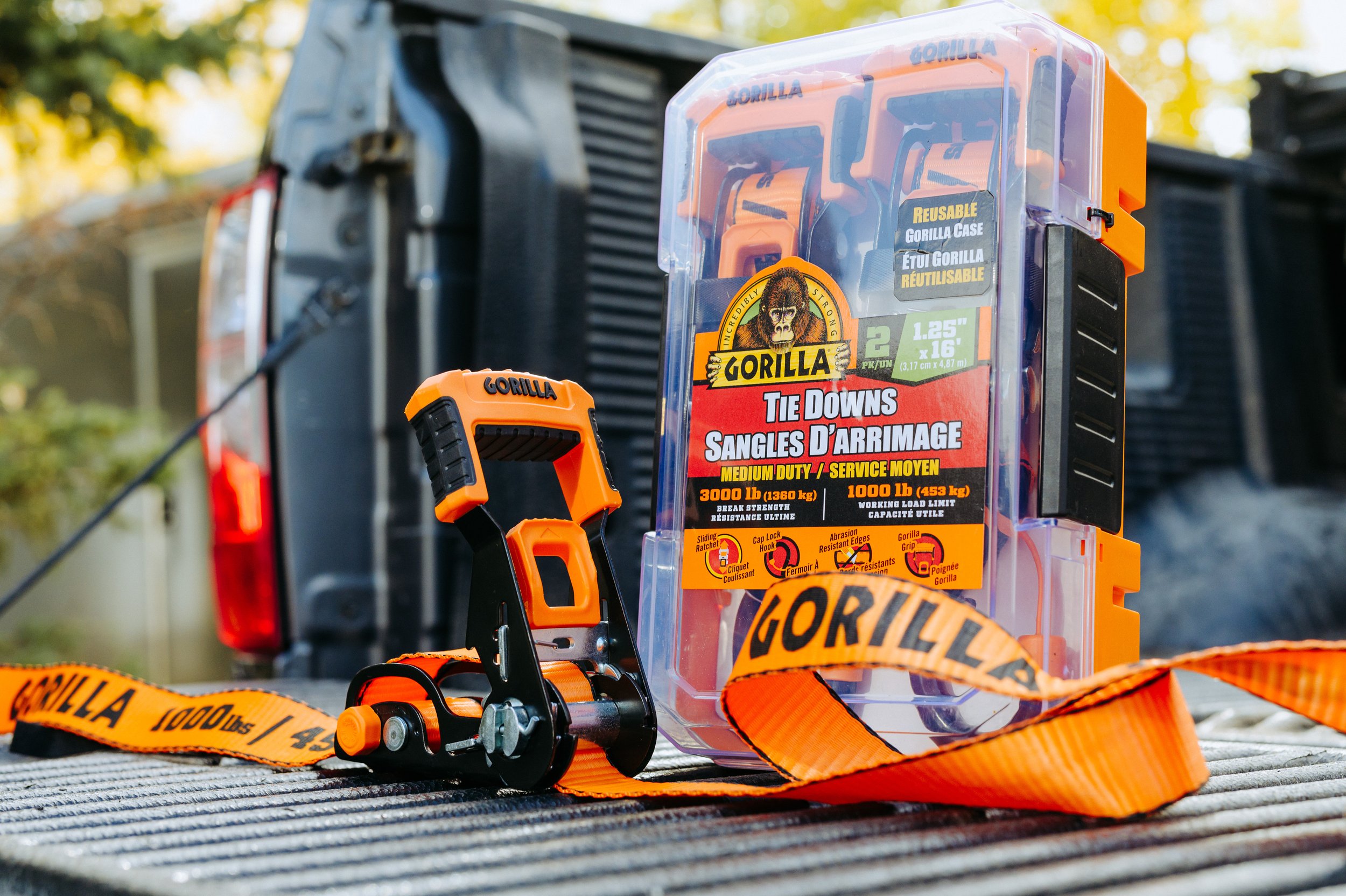
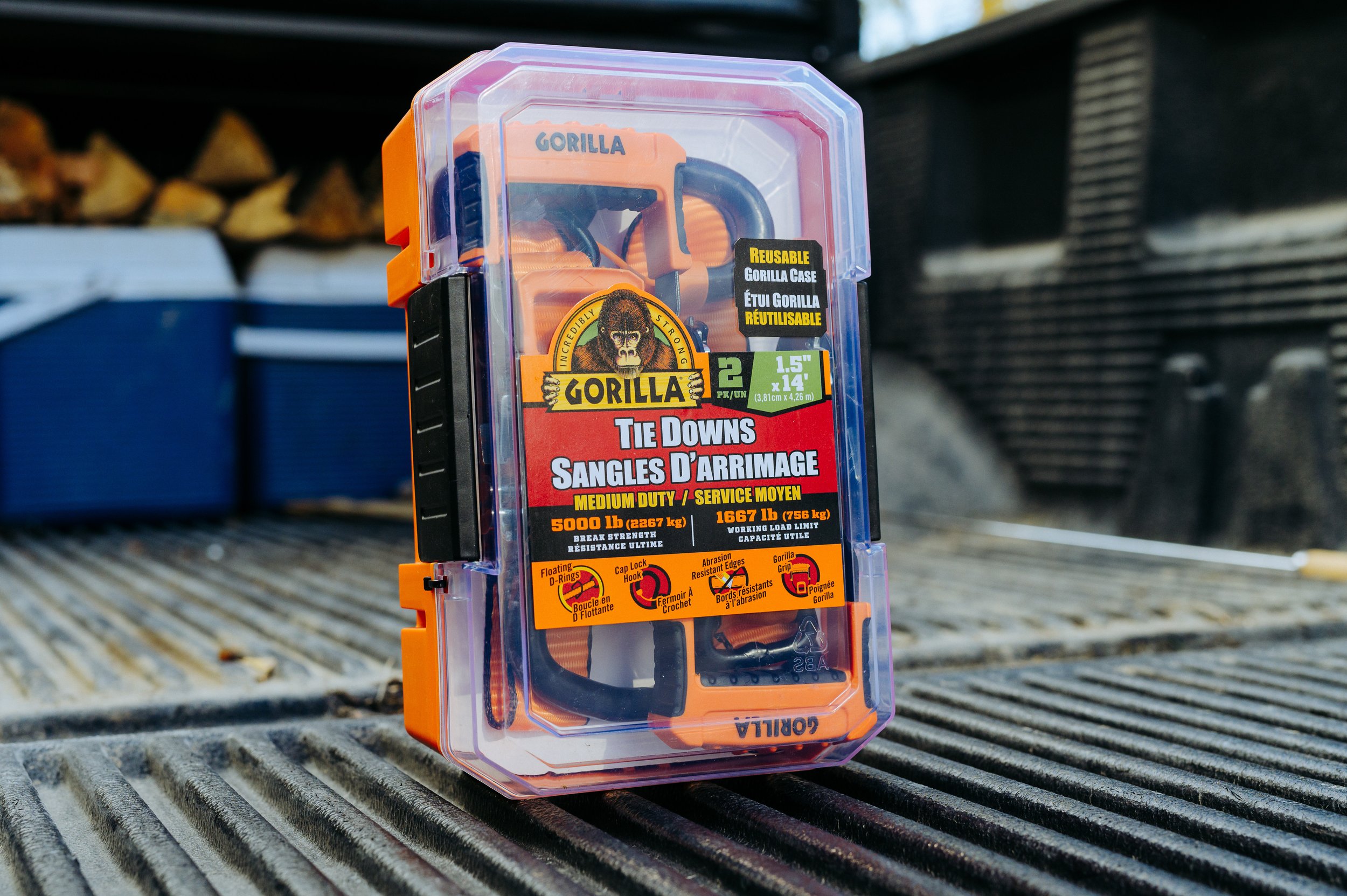
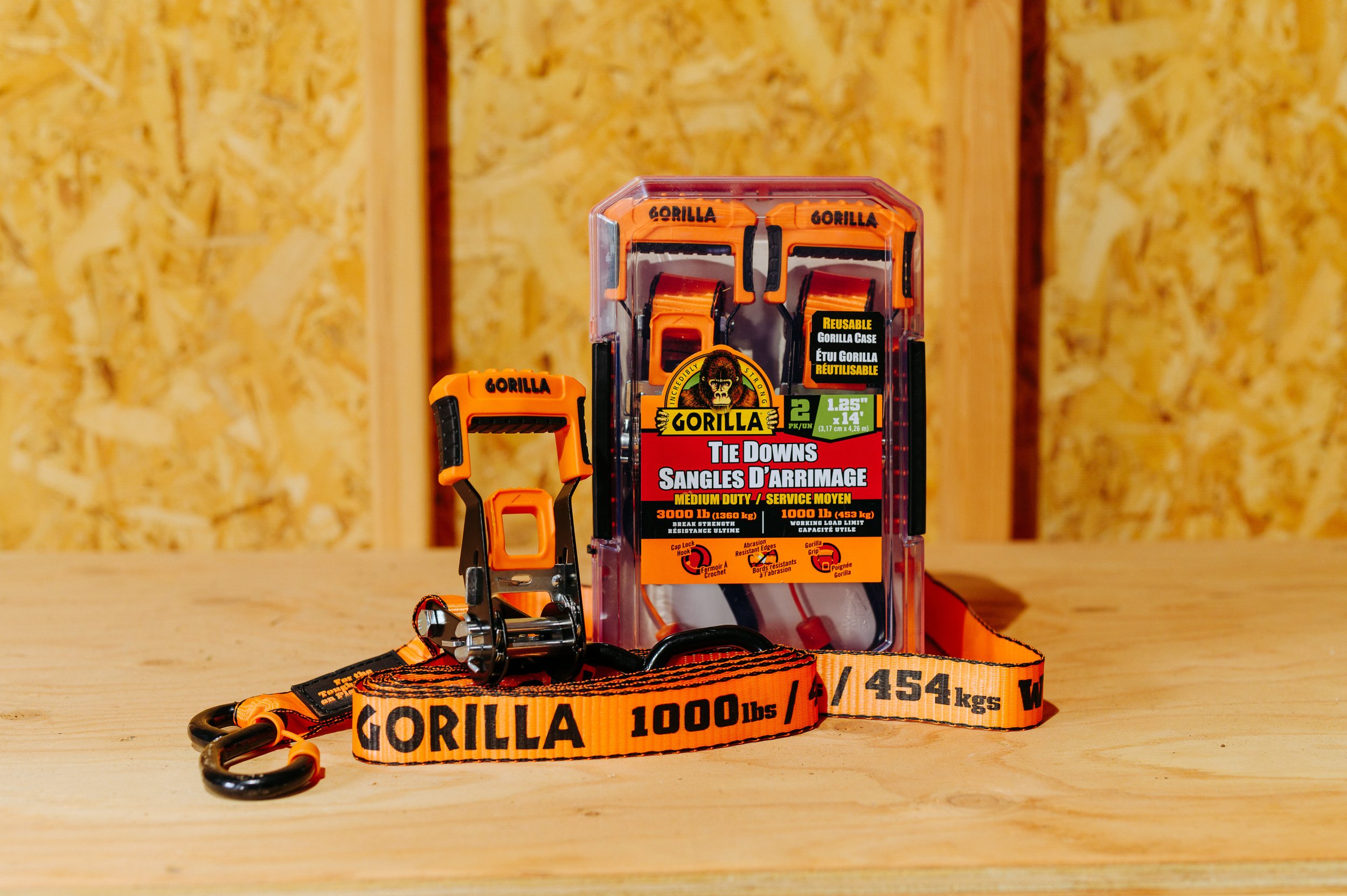
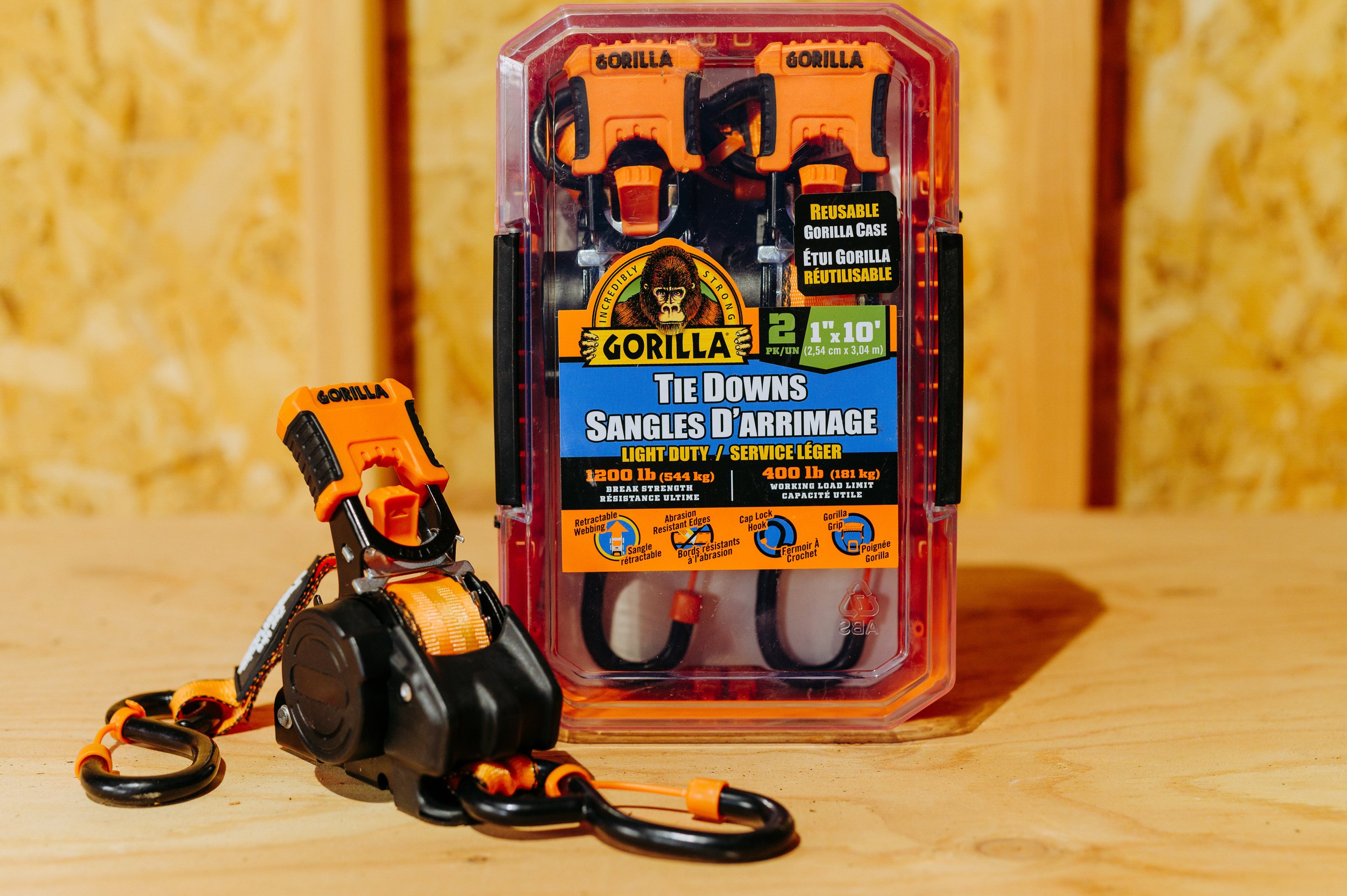

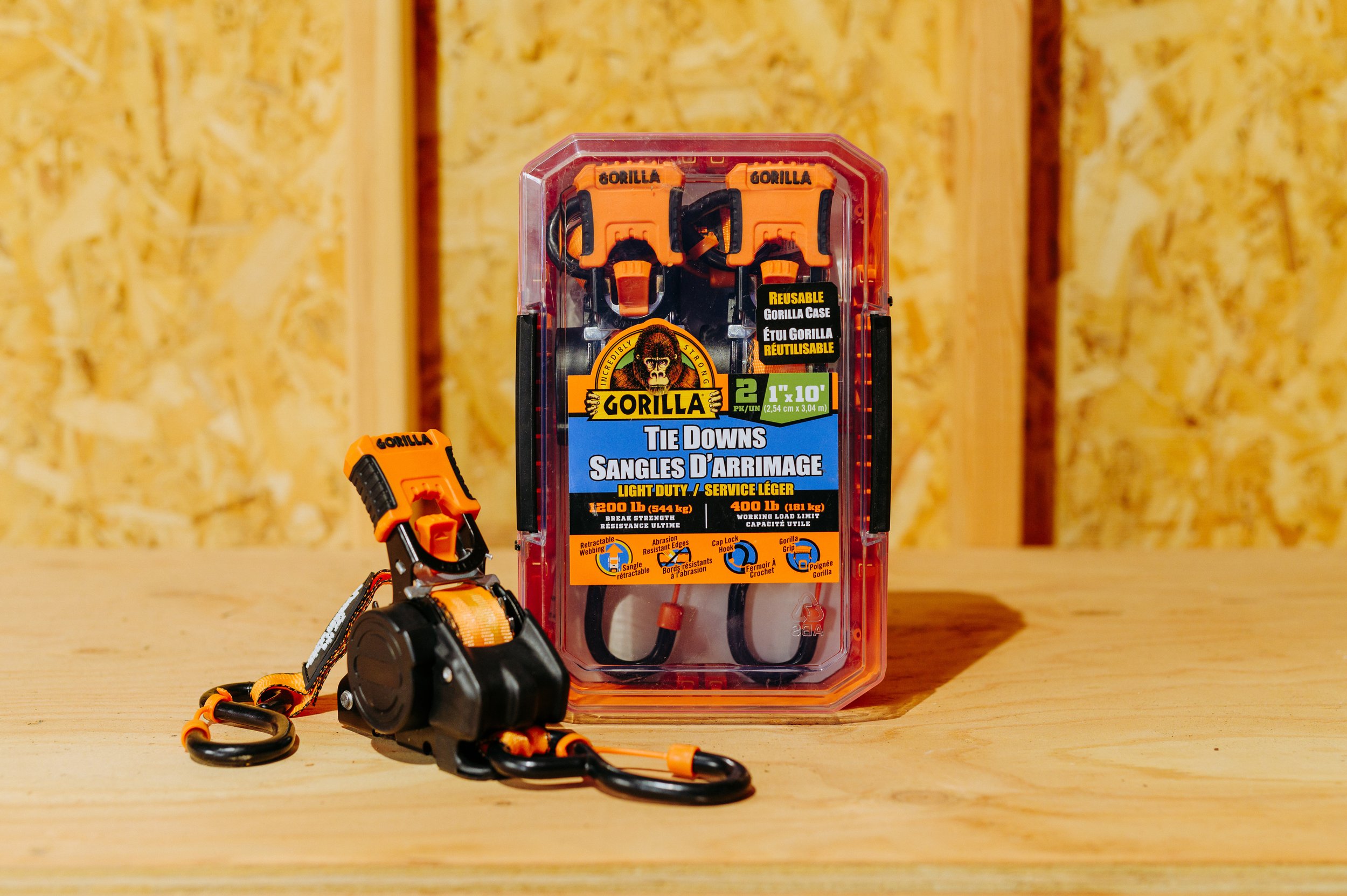
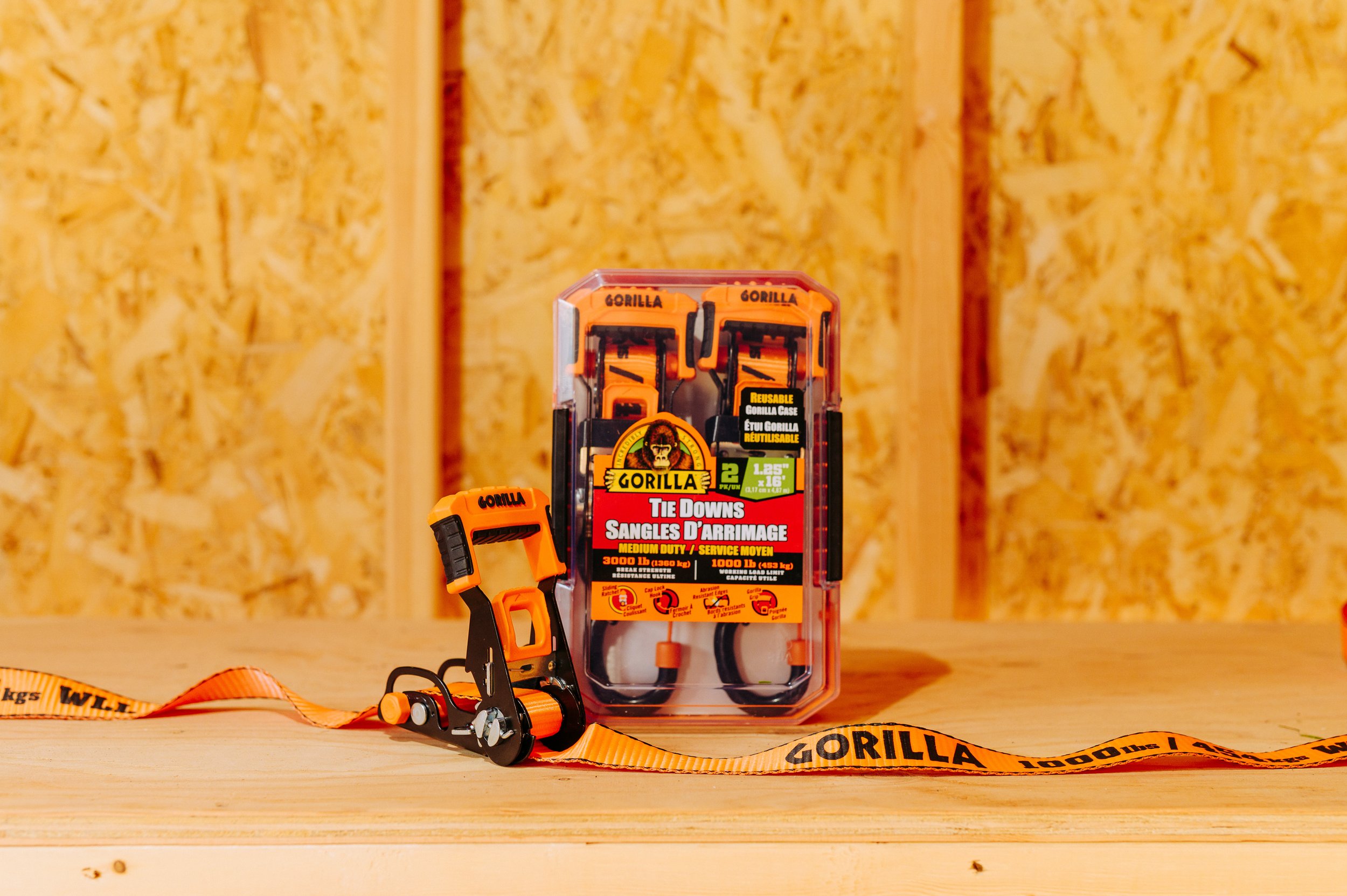
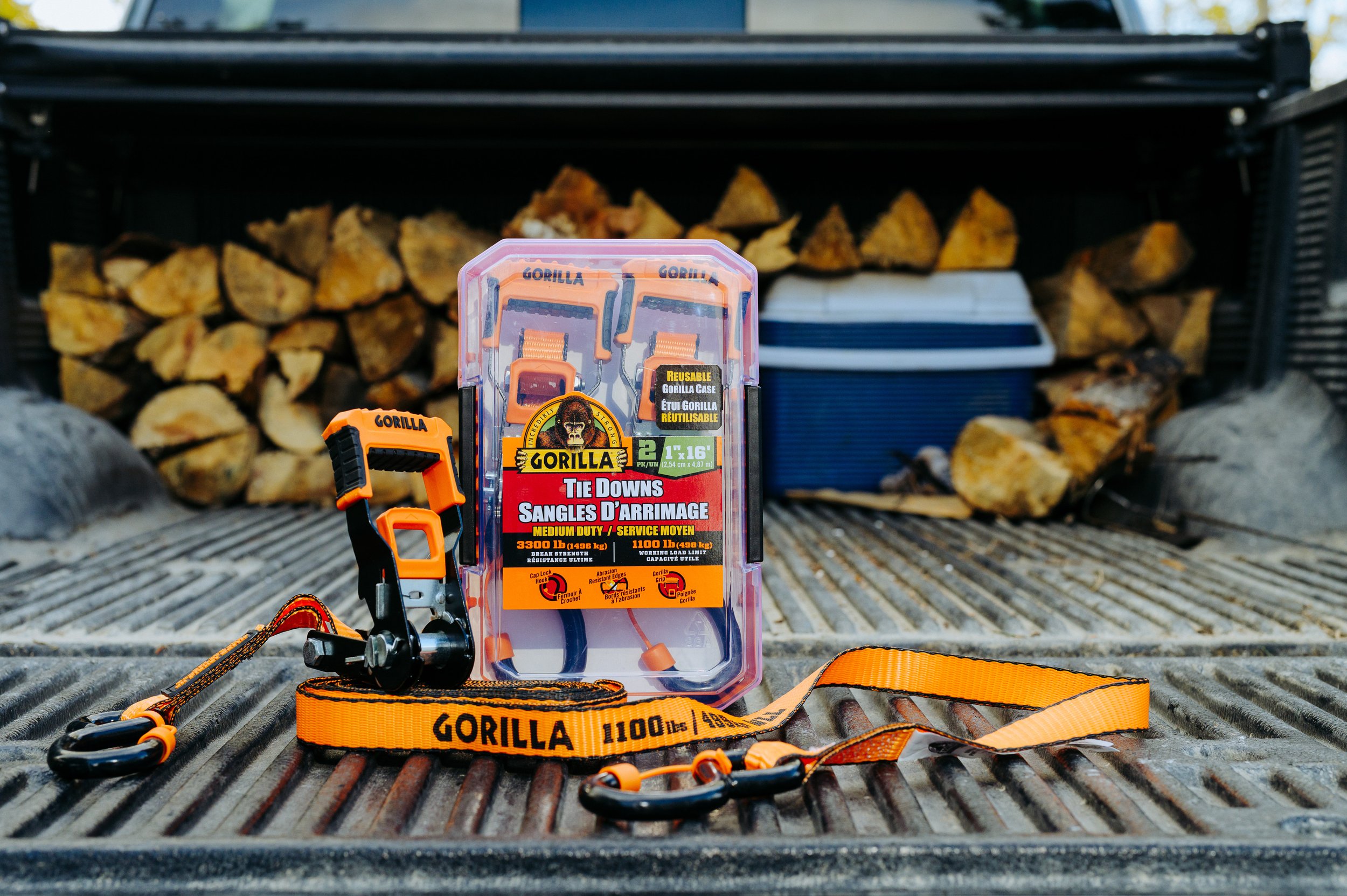
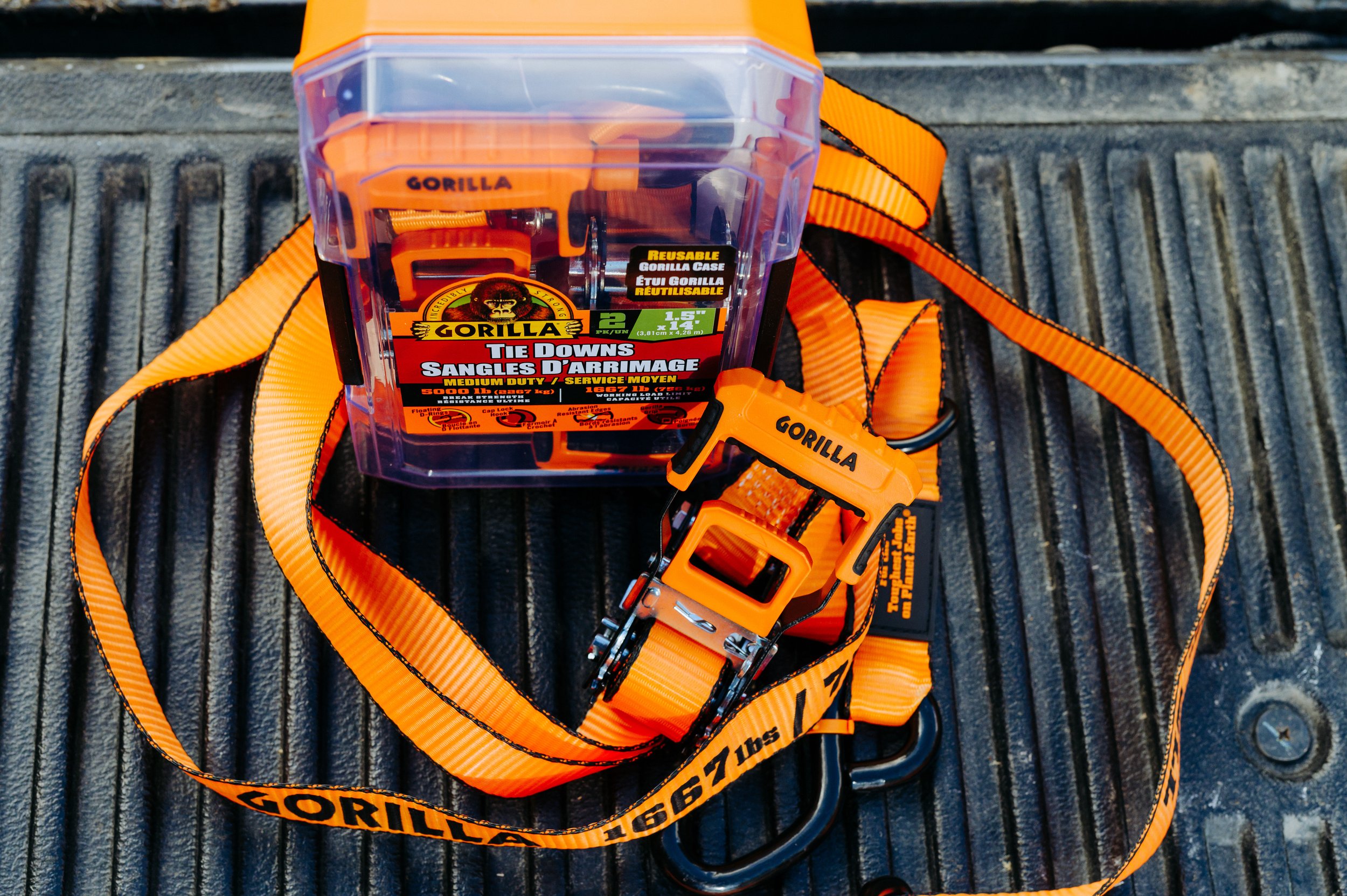
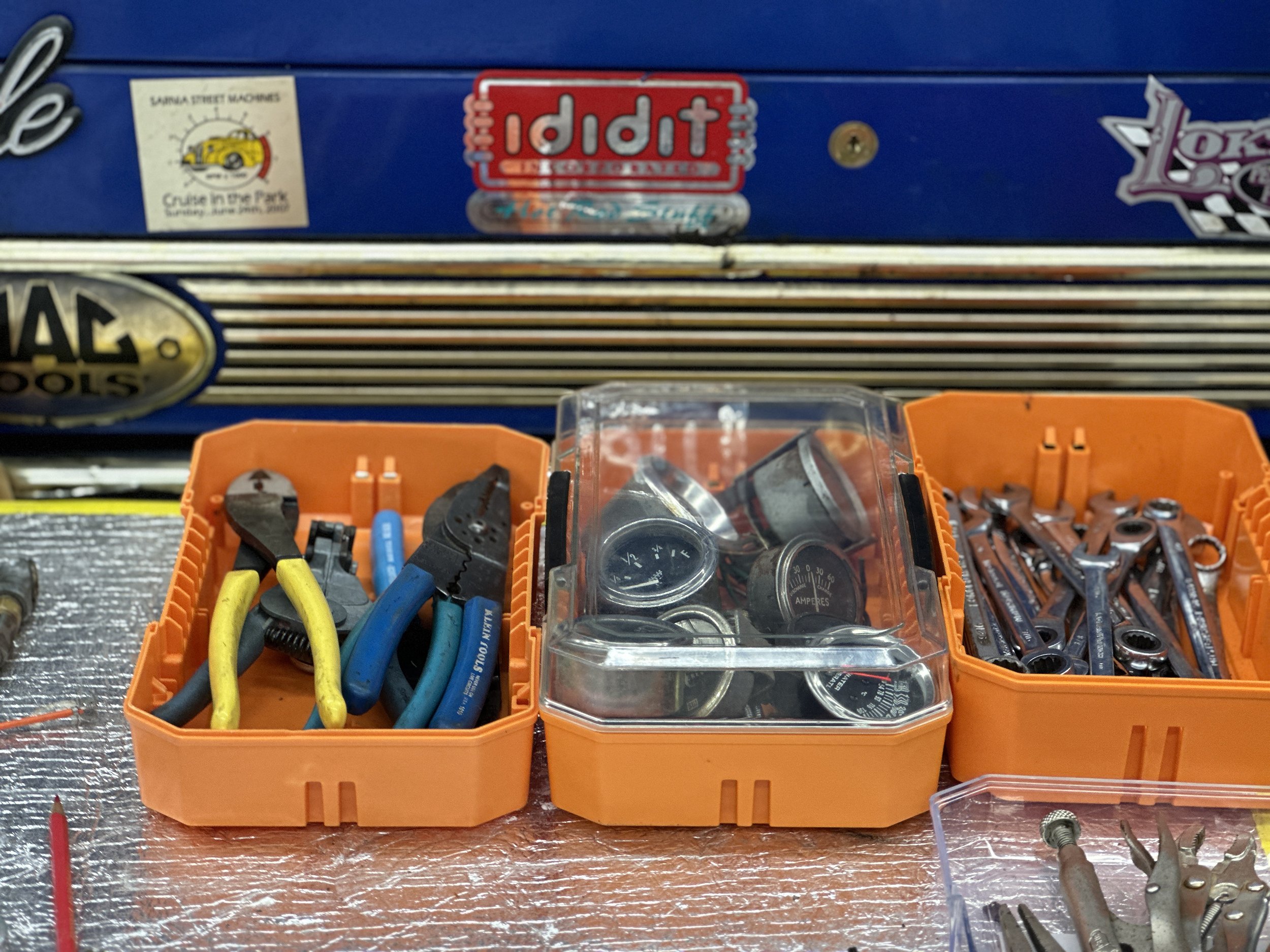
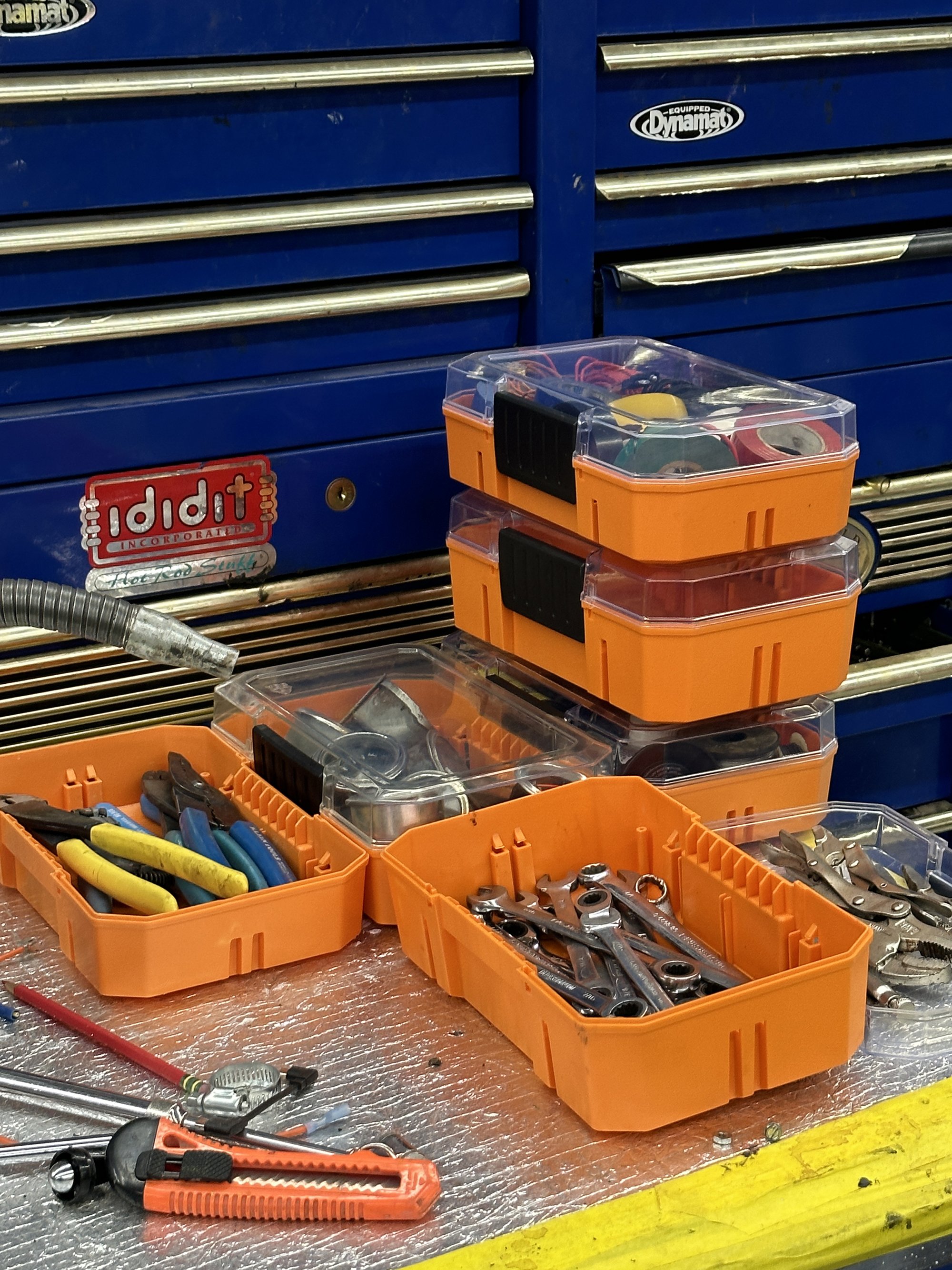
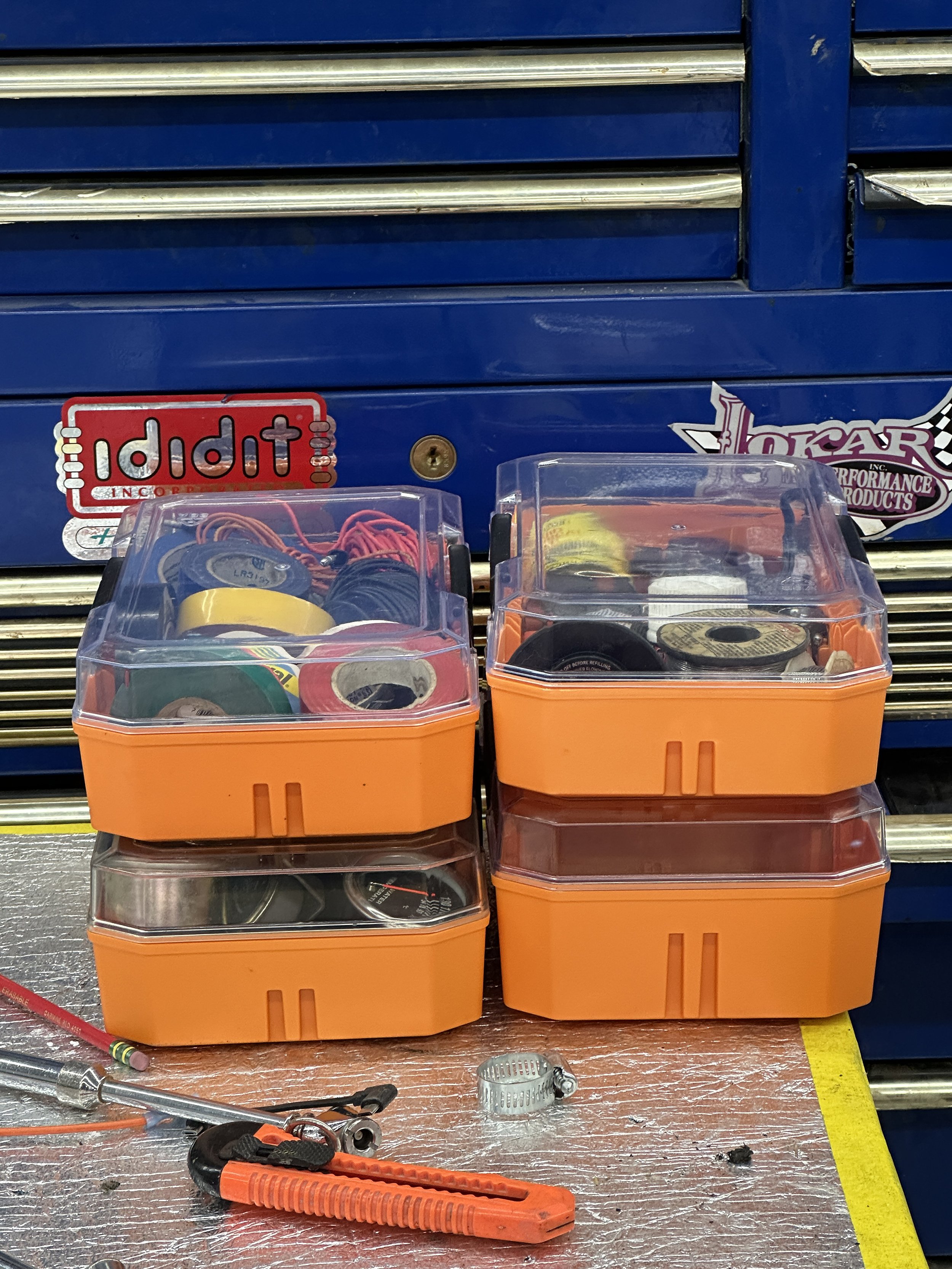
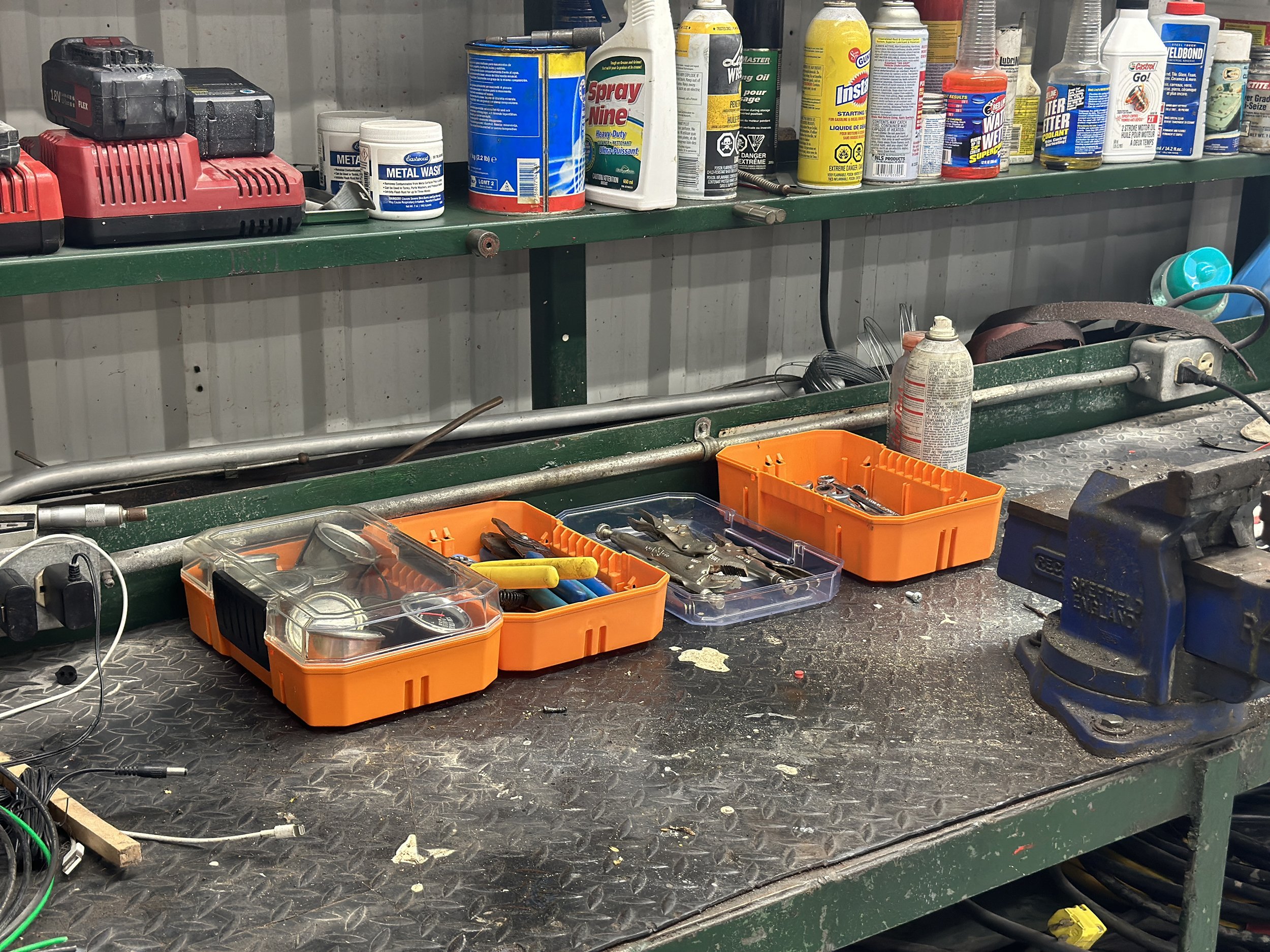
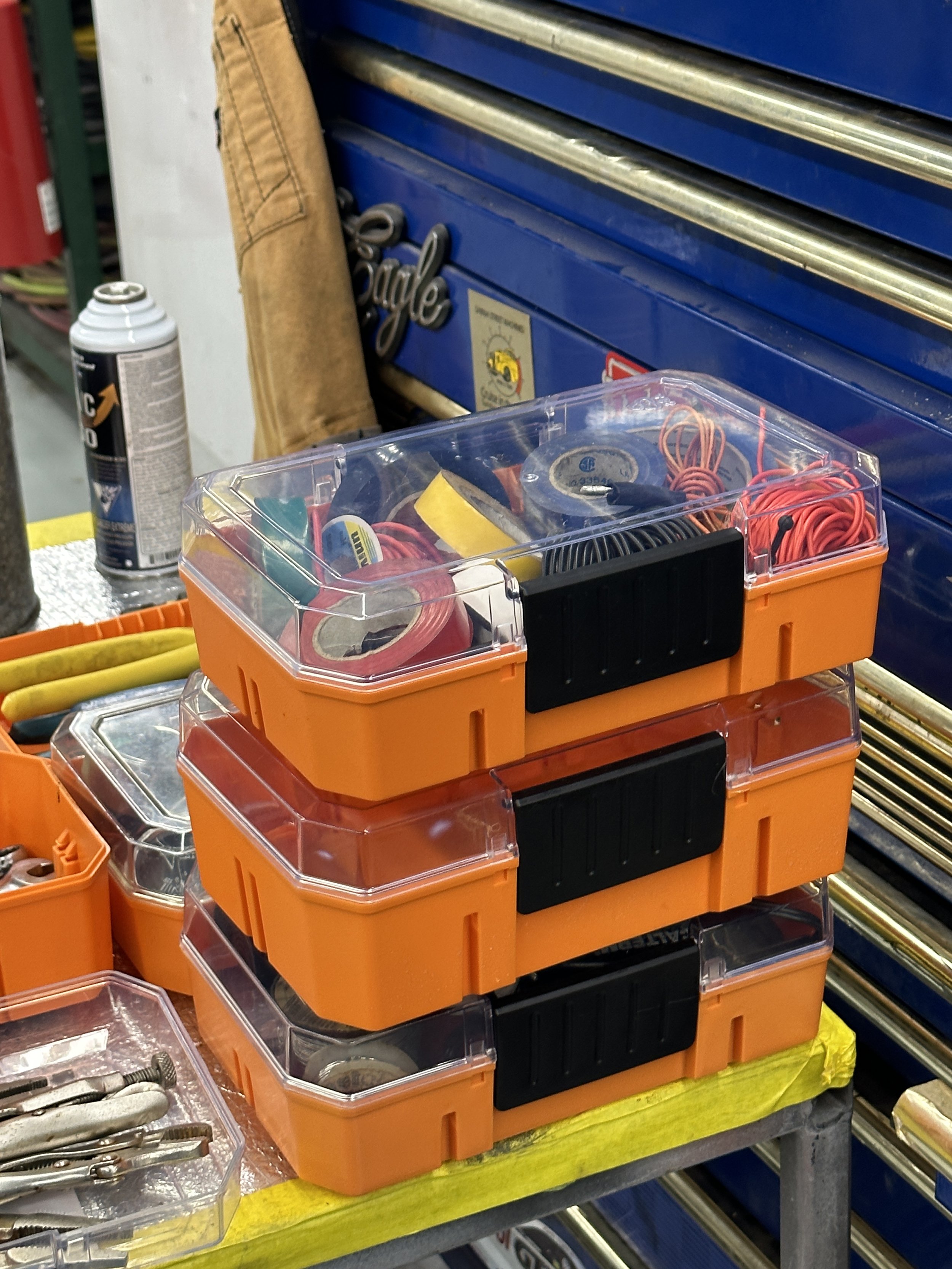
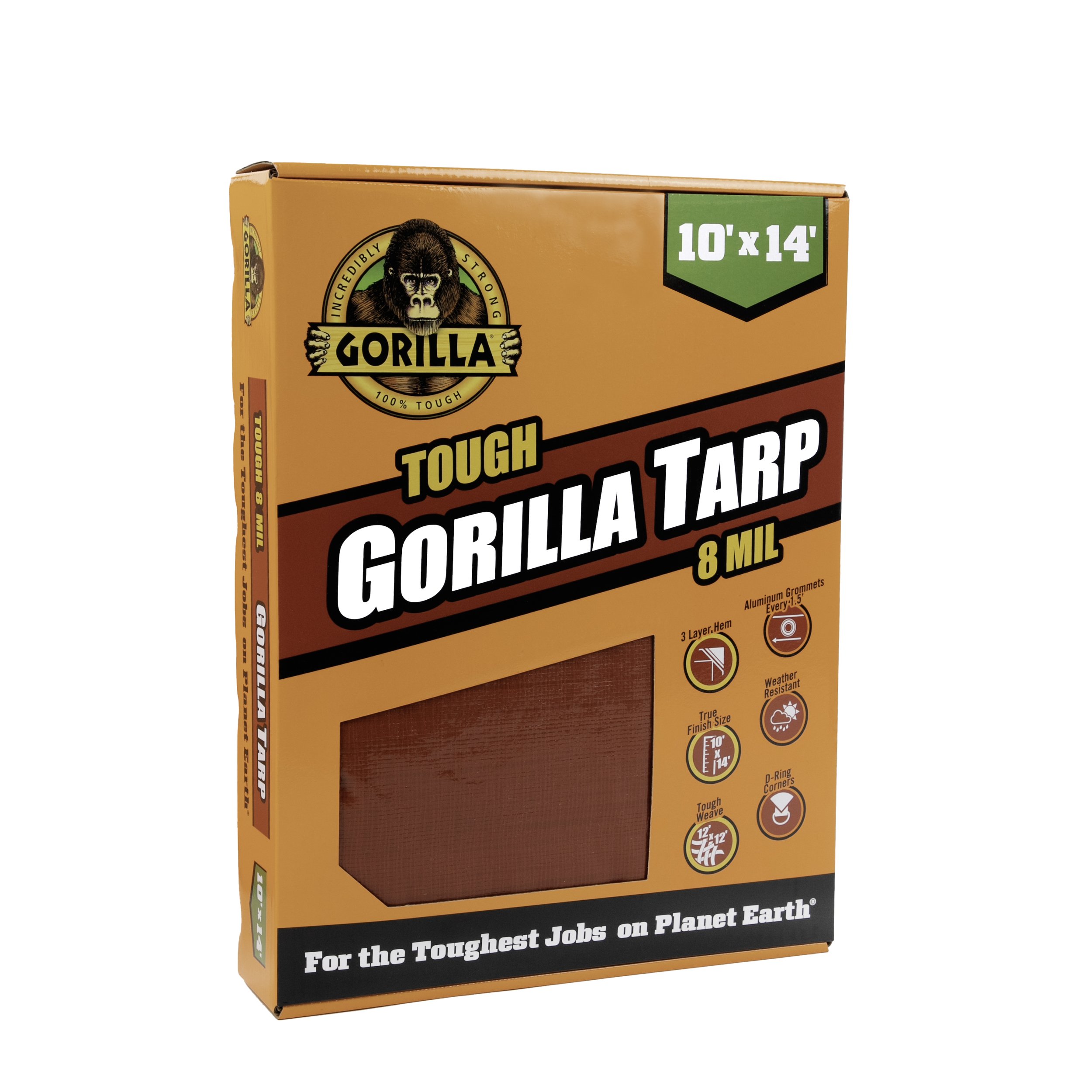

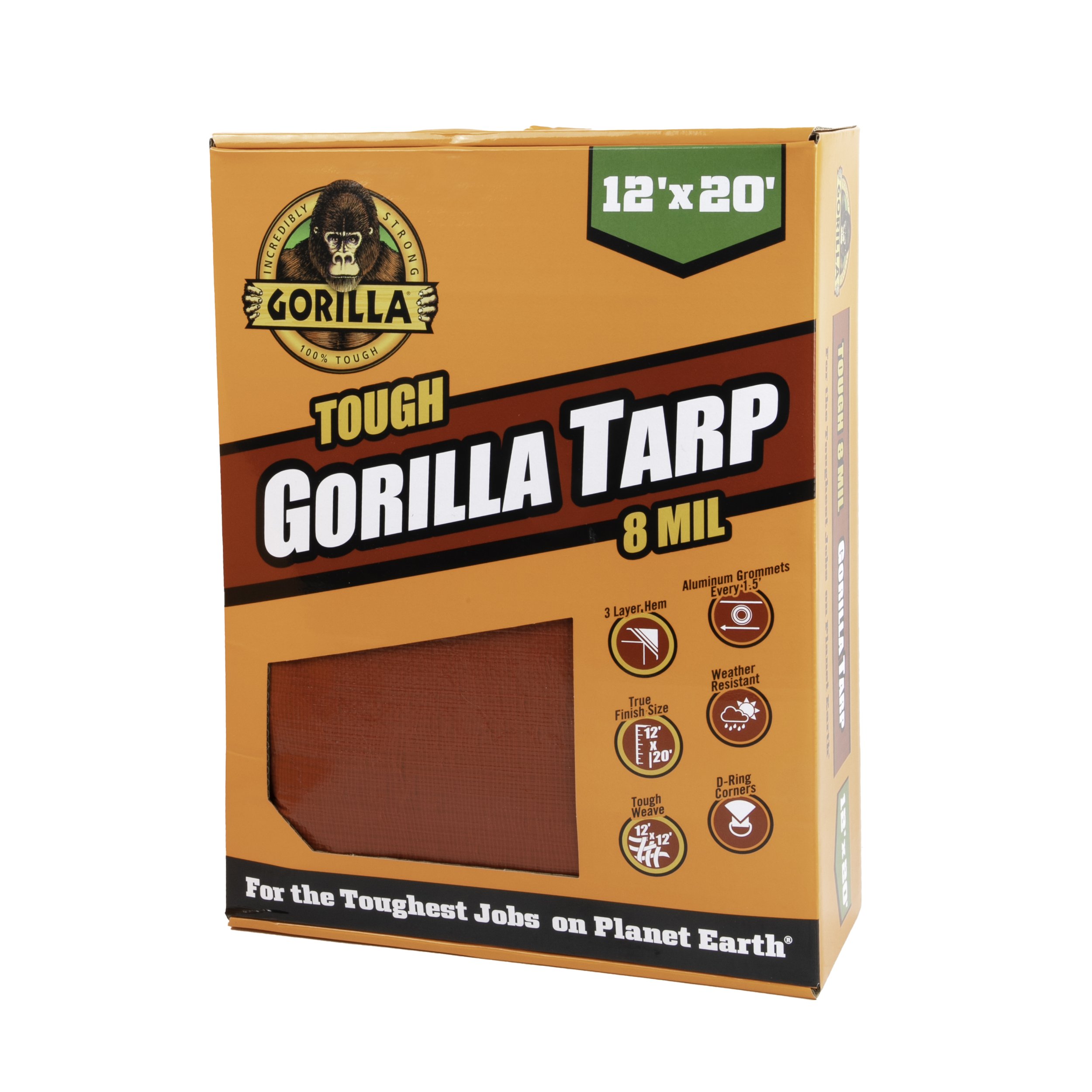
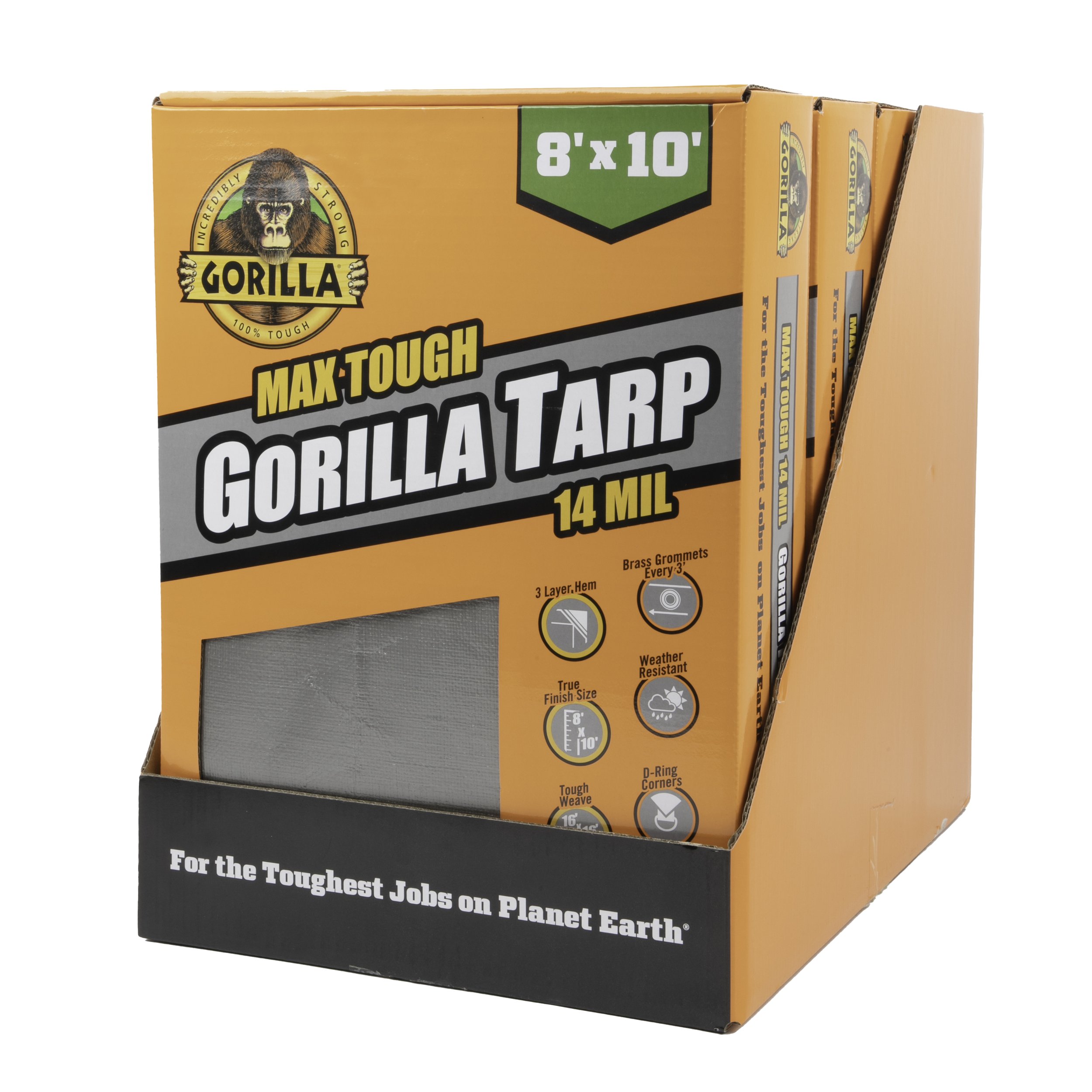
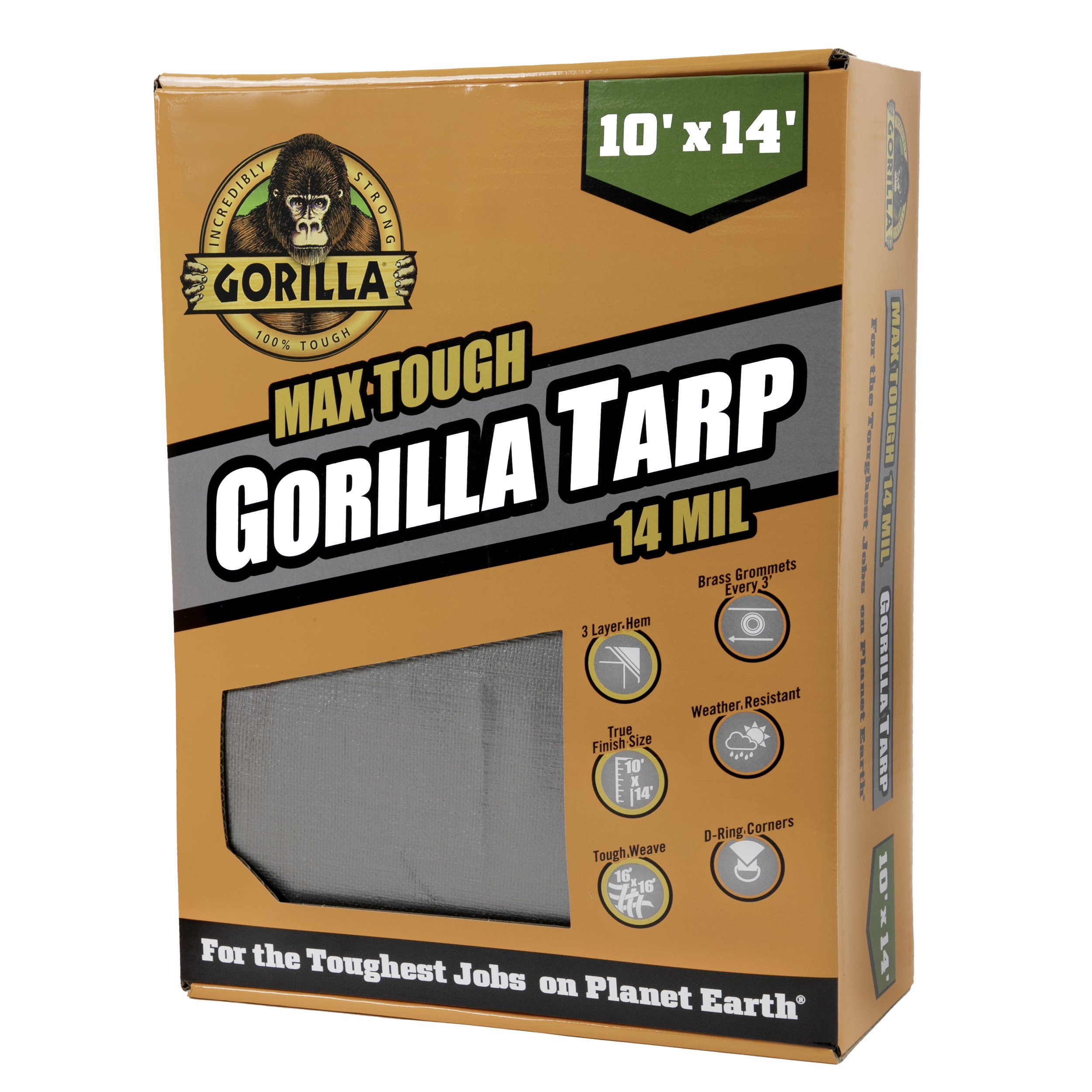
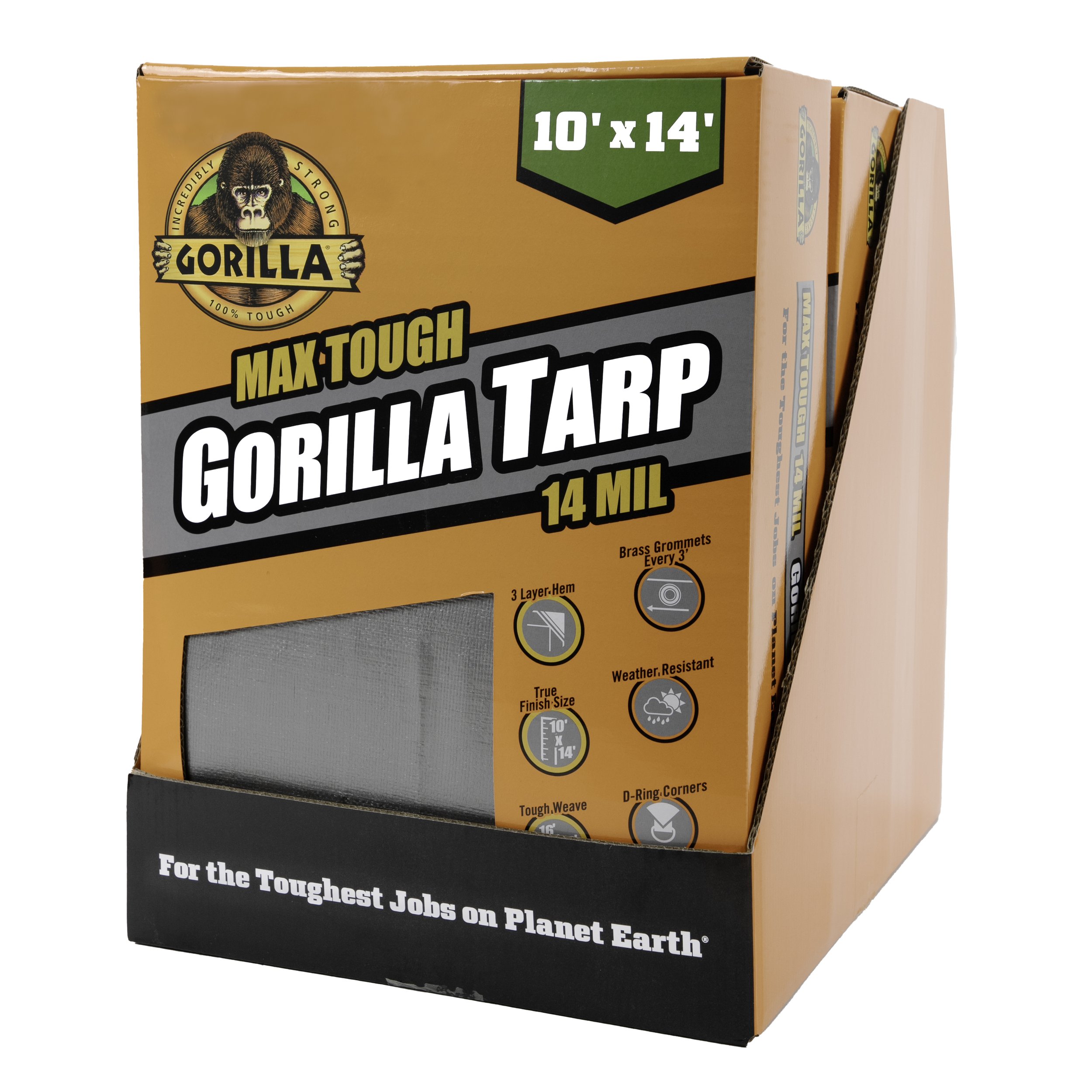
Project Background
The Pavlovian answer to sustainable packaging design is to simply reduce material use — single-use plastic in particular. But the challenge isn’t about plastic vs. not-plastic; it’s about matching the useful lifespan of the package to the actual lifespan of the materials from which it’s made. Too many packages use long-lived materials to deliver stunning but short-lived performance on shelf. Others sacrifice functional performance to deliver better ecological performance. On this project, our team maximized the user experience of each package while simultaneously reducing their ecological impact and eliminating all single-use plastic.
Today’s tarps are universally shipped and displayed in labeled poly bags. They’re cheap, hard-to-shop, and all but impossible to recyclable.
The shift to a folded carton allows Gorilla Glue’s new tarps to be shelved upright in new areas of the store. It also enhances shoppability with a standing package, massive billboard, edge labeling, and a large area for consumers to touch and feel the product. Boxes for larger and heavier tarps also include reinforced carrying handles to aid portability. And all packages include tear-away closures to provide tamper-evidence and prevent the use of a box cutter (a major source of product damage). The shift to a corrugated carton means the complete elimination of single-use plastic in a package that serves no useful purpose once the product comes home. The resulting design offers enhanced user experience and reduced ecological impact in a new-to-category structure.
Today’s tie-downs are wire-tied into open, single-use plastic cartons. Their packaging makes them difficult to remove and impossible to reinstall. As a result, their plastic display cartons are landfill-bound just moments after they come home, and the tie-downs are left without a home.
The shift to a permanent, durable case keeps this all-plastic package from becoming single-use and elevates the tie-down from a low value consumable to a proper tool. The clear front of the package allows shoppers to see the product from all sides but reduces both damage and theft. A folded carboard backer card within allows the producer to mount multiple SKUs and introduce promotional labeling without modifications to the outer structure. The reusable plastic container provides long-term, waterproof storage for the product — and other items, such as hardware or tools — and a lasting touchpoint for the powerful Gorilla Glue brand. The resulting package is tough enough for the toughest jobs on planet earth®.
This project demonstrates a more nuanced approach to sustainable packaging design. It features a recyclable, single-use paperboard structure to enhance the branding, shelving and shoppability of tarps and an indestructible, all-plastic container to increase the value of provide long-term storage for a range of ratcheting tie-down straps. The confluence of these design elements keeps plastic out of the landfill, justifies a higher retail price for both items, and sets these products apart from competitors of lower cost and quality.
One zero waste package across multiple SKUs. And the contents are elevated from commodity wear items to valuable tools.

